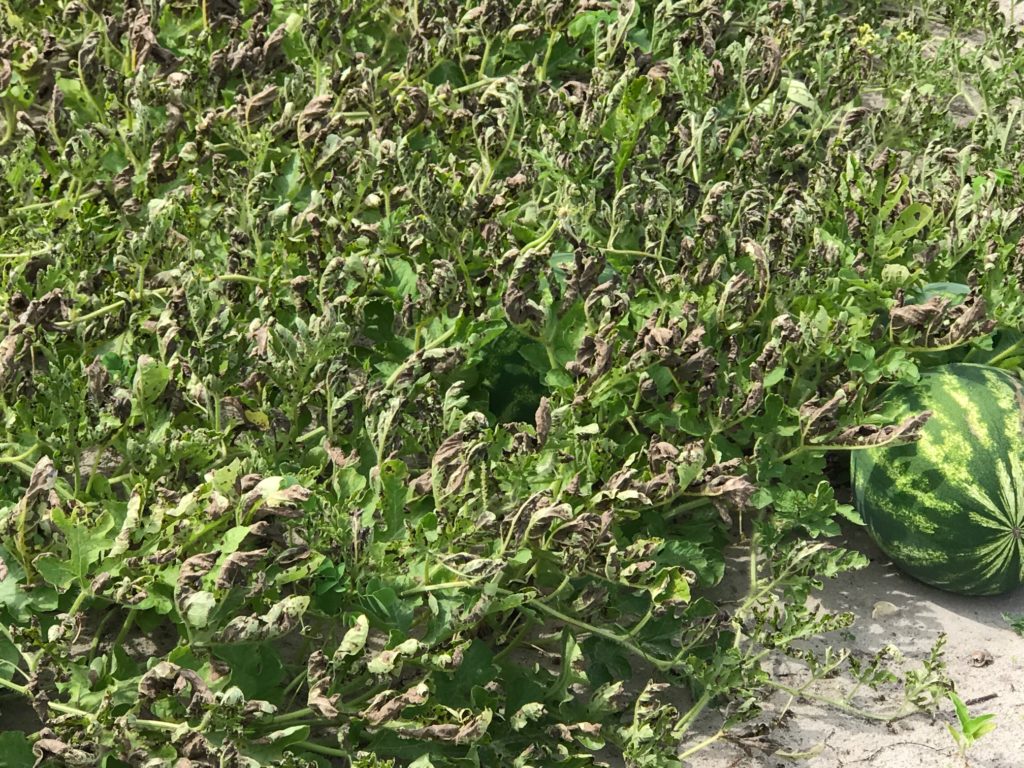By Clint Thompson
Downy mildew disease has been confirmed in North Florida watermelons. South Georgia and South Alabama watermelon producers should be wary since the disease can spread easily by the high winds being experienced this week.

“With the way the winds have been blowing here recently I think we’re in a situation where it’s relatively high risk throughout the region. Because it’s difficult to catch up to, if it gets ahead of you, we just want to make sure people are aware and make the quickest, best decision that they can for their farm,” said Bob Hochmuth, University of Florida Institute of Food and Agricultural Sciences (UF/IFAS) Regional Specialized Extension agent in Live Oak, Florida.
“The way that this disease typically moves, it moves from south to north. What we’ve been doing is watching this to the south of us and those folks in Georgia and Alabama should be watching to the south of them, which is the Suwanee Valley. It’s a situation for everybody to intensify their scouting, and if they see things that look similar to downy mildew, then they need to react quickly and get it to their diagnostic laboratory to get it confirmed.”
Growers should consider adding one of these fungicides to their program soon. For fields where downy mildew has been confirmed, producers should start with Orondis Ultra or Zampro this week and Ranman next week. Where downy mildew has yet to be detected, growers should start with Ranman this week and follow with Orondis Ultra, or Zampro.
Hochmuth said the disease confirmation has been isolated to one field so far.
“So far, we only have one confirmed location. However, we do have some other suspicious samples that are being submitted and is one of those that it’s so important that I am never going to be in a position to say, ‘We think we have downy mildew.’ It has to be confirmed by our lab,” Hochmuth said. “To be honest I think there are some others that look even more suspicious than that first one. I have no reason to suspect it’s the only one.”
Downy mildew is traditionally known as “wildfire.” Because of its high risk of damage and movement, Hochmuth is cautioning farmers to consider a spray program targeted at downy mildew.
“We want everybody to know what is going on and what is in the region. But it’s impossible for me in a newsletter to say something that is always appropriate for every single farm. We’ve got crops that are one month old or older than each other. There was a long period of time when crops were being planted,” Hochmuth said. “I think the most important thing for me is that growers need to know downy mildew is in the area and begin to intensify their scouting and make the appropriate choices for their particular crop.”









